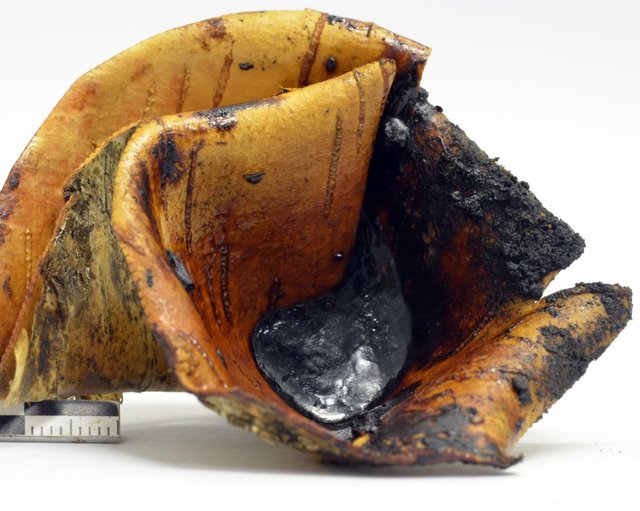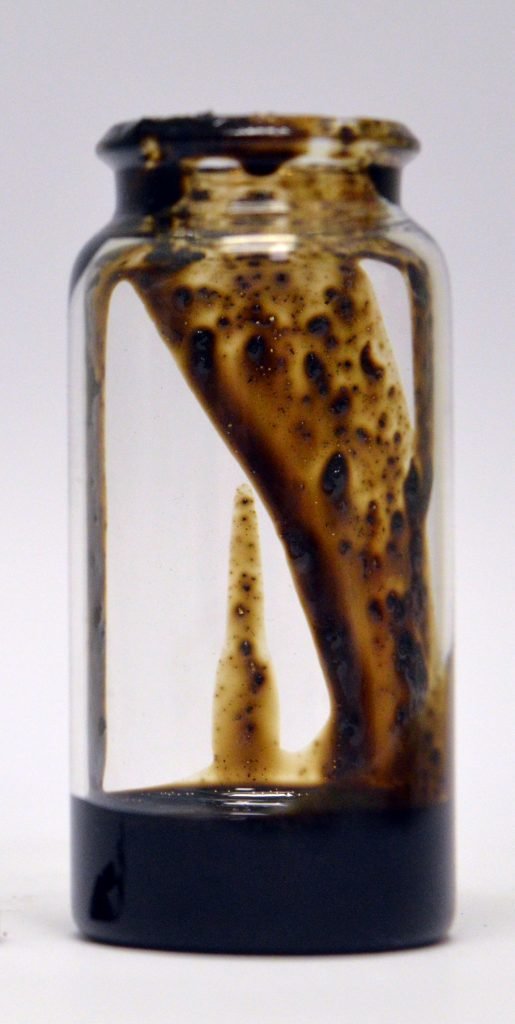The First Adhesive Was Invented by Neanderthals 200,000 Years Ago

Neanderthals — early members of the genus Homo from Europe and Asia — have had such a lowly standing on the human family tree that the very word Neanderthal is often synonymous with archaic ways and ignorance.
Neanderthals, however, had big brains, complex societies, and tools so useful that some designs created for leatherworking are still in use today. Many researchers even believe that a true extinction of Neanderthals might not have occurred, but that these individuals instead were absorbed into what evolved to be current Homo sapiens. To this day, people of European and Asian heritage retain Neanderthal DNA.
Excavations over the past few decades have unearthed tar lumps and adhesive residues on stone tools at Neanderthal sites in Germany. Some anthropologists have claimed that adhesive production is a high-tech skill associated with anatomically modern humans, yet new research published in the journal Scientific Reports not only supports that Neanderthals invented adhesives, but also it explains how they probably achieved the feat.
“Right now, the oldest evidence we have points to Neanderthals inventing adhesives at least 200,000 years ago in Europe,” lead author Paul Kozowyk said.
RELATED: Neanderthal DNA Is Being Purged From Our Genomes
Kozowyk, a researcher at Leiden University, and his team analyzed archaeological evidence for early tar production. They additionally conducted experiments based on Neanderthal know-how to determine how the early Eurasians managed to invent tar, an adhesive that helped to strengthen and waterproof bindings made of sinew, hide, or plant fibers used to attach bone or stone tools to handles. The technique, known as hafting with tar, was also extended to weapon production, such as improving spears employed for hunting.
The researchers propose as many as three tar production methods could have been developed by Neanderthals. The first, called "ash mound," required placing ambers and ash over a roll of birch bark tied with fresh wood fiber to keep it tight. The scientists determined that care must be taken to balance the ratio between embers and ash, which helps to keep oxygen out and promotes the production of tar that can then be scraped off the roll.
Sign up for the Live Science daily newsletter now
Get the world’s most fascinating discoveries delivered straight to your inbox.

The second method demonstrated by the researchers, "pit roll,” required placing hot embers directly on top of a birch bark roll placed over a pit, which produced tar.
The other method, “raised structure,” was the most sophisticated of all in the study. It involved putting a container made of birch bark in a pit. A loose roll of bark was then placed on organic mesh covering the pit. The researchers covered the bark with dirt and lit a fire over the entire mound. This technique, which required more wood, time, and set-up than the other methods, yielded the most tar.
“It's possible that all three methods we tested, or even some different methods, were used depending on the needs or requirements at the time,” Kozowyk said. “For example, a major service to a Neanderthal tool kit might have called for something like the raised structure to produce lots of tar for multiple tools.”
“On the other hand,” he added, “a small hunting camp requiring a quick repair may have only needed a small amount of tar, and then a simpler method would be much more practical. My personal favorite is the pit roll method, because it's simple, but still produced reasonable quantities of tar.”

The earliest evidence so far for adhesive production by anatomically modern humans dates to around 70,000 years ago, according to the researchers. It is likely that members of Homo sapiens in Africa figured out how to create tar on their own — a case of independent invention — but scientists have not ruled out that they learned the birch bark tar production techniques from Neanderthals.
Tar has many possible functions. Kozowyk, though, said, “During the Paleolithic, it’s unlikely that tar was used for much more than hafting tools.”
“In historic times," he added, "tar was used to waterproof boats and ships, containers and to protect wooden buildings, so its use is not limited to hafting tools. But these require production on an industrial scale that is not seen until more recently.”
Placing materials in ceramic containers can help with tar production. There is no evidence that Neanderthals ever produced pottery, however.
“There was probably no need for pottery until quite recently — speaking on a scale including hundreds of thousands of years of human evolution — and even in most modern human hunter-gatherer societies, pottery is an exception,” Kozowyk explained.
RELATED: Ancient Dental Plaque Reveals That Neanderthals Used ‘Aspirin’
Neanderthals and early anatomically modern humans might have instead crafted containers out of wood and plant fibers. But if they did, preservation of such items is so poor that there is no firm evidence of them dating to the times of the oldest tar production.
Neanderthals and anatomically modern humans diverged long before then. An emerging theory is that the divergence occurred at least 500,000 years ago, with each group evolving on its own path until interbreeding occurred. The latter mixing, as well as similarities among the groups, however, have many anthropologists believing that Neanderthals and other hominids, such as Denisovans, should be considered as Homo sapiens.
“I used to argue that ‘anatomically modern humans’ — including fossils that essentially look like us today — are the only group that should be called Homo sapiens,” Chris Stringer of the Natural History Museum in London said. “Now, I think that anatomically modern humans are only a sub-group within the species Homo sapiens, and that we should recognize the diversity of forms within early Homo sapiens, some of which probably went extinct.”

The jury is still out on what exactly happened to Neanderthals. Some researchers have suggested that anatomically modern humans killed them off, or — like early colonizers of the Americas infecting native populations — spread diseases for which Neanderthals had no immunity. Kozowyk shared his view.
“What happened to Neanderthals was probably the result of a number of complex processes including, but not necessarily limited to, interbreeding with some cultural interaction, competition in some form, and a low Neanderthal population that led to them eventually being genetically overrun by the arriving modern human populations,” he said. “But this also likely varied from one region to another.”
Such variations may have left their mark on modern populations.
Svante Pääbo, director of the department of evolutionary genetics at the Max Planck Institute for Evolutionary Anthropology, said several studies now show that East Asians and Native Americans have about 20 percent more Neanderthal contribution in their genomes, which could be due to extra inbreeding in the ancestors of East Asians.
Perhaps it is no coincidence that many early Native Americans had expertise in working with tar, which tribes such as the Chumash and Tongva applied to sealing cracks between the boards of large wooden planks used to make their sturdy canoes. Certain tribes such as these even settled near natural sources of tar, like the La Brea Tar Pits located in what is now Los Angeles.
Originally published on Seeker.









